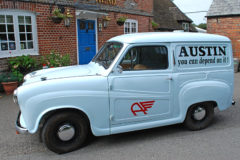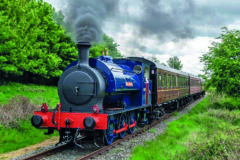The Allis-Chalmers tractor range
Posted by Chris Graham on 15th July 2021
Ben Phillips spotlights the interesting and brightly-coloured machines to be found in the Allis-Chalmers tractor range.

Allis-Chalmers tractor range: The Allis-Chalmers U. This model pioneered the use of tractor tyres, with the help of Firestone, and two racing drivers took this model on a promotional tour all over the US, providing speed trial demonstrations!
Looking at the history of Allis-Chalmers, you find that a man by the name of Edward P Allis started the company way back in 1860. This entrepreneur ran a successful factory in Milwaukee, Wisconsin.
Allis soon decided steam power was the way forward, a conclusion that would prove a good one for many year, during which the company employed many people, including his two sons. It wasn’t until the company hit financial trouble in 1912 that Otto Falk came on board, advising that agricultural machinery should be considered as a way forward.

A more familiar row-crop tractor, the WC soon become very popular; the tricycle design being shown first on this model.
So, in 1914. Allis-Chalmers started to produce tractors, and things went well until the mid-1920s. In 1926, Harry Merritt joined the firm to help boost its fortunes, which were on the wane, once again. It was also Merritt who is credited with choosing the famous Persian orange colour. Apparently, it was the sight of a bright orange, Californian poppy that convinced him to adopt that distinctive colour for the company’s products.
The tractors
Our first Allis-Chalmers tractor to look at is the U, which has a similar look to the Standard Fordson. The wide wings, lack of tinwork and bare radiator are very reminiscent of the early Fordson.

The WF was a standard width version of the WC; this one is a styled version which, I think, is better than the un-styled.
The colour was the famous Persian orange, and a nicer shade than the Fordson, in my opinion. It was this model that helped develop tractor tyres as, during the late 1920s, tractors were on steel wheels as standard. It was Harry Merritt’s close friendship with Harvey Firestone that facilitated the free testing of tyres on tractors, and led to the best type being identified.
They even involved Barney Oldfield – a retired racing driver – and Ab Jenkins, who liked to go fast on anything with four wheels. Together they toured America in the 1930s, going as fast as possible on slightly modified Allis U tractors. This wowed the public, as the pair both set land speed records of over 64mph.

In 1938, Allis-Chalmers brought the B to market. This one is a bow-axled model, meaning that the front axle is bowed downwards.
If the Model U was shown off for its speed, the WC was shown for what tractors should be good at, farming. This was a row-crop tractor and a first for Allis-Chalmers. The U had been quite a wide-tracked machine, which helped it go fast, but row-crop tractors were different. The front wheels were positioned side-by-side, so they could pass down between rows in a field without damaging the crops.
A real winner
The WC became by far the most popular tractor to date for the company, and it’s styling offered a glimpse of the future. Not forgetting the standard-width tractors, the WF was produced and featured the same styling as the WC so, if you don’t fancy the front wheels together, this is the model for you.

If you compare this to the bow axle, you’ll see it has a straight axle, which was adjustable. In my opinion, it’s not as appealing as the bow type.
If Allis-Chalmers thought it was onto a winner with the WC, it certainly was when the B was introduced. The styling was similar to the WC and WF, with a seat perched at the very back of the tractor. However, the B’s seat was more spacious, and featured a relatively comfy cushion pad and high backrest. The long steering column led to an oval fuel tank; the WC’s column went by the side of the tank, while the B’s went underneath.
Spot-on!
Harry Merritt was responsible for the Allis B as he’d done extensive research into what farmers needed, and the B was what he believed they wanted. History would confirm that his reasoning was spot-on, as the Allis B enjoyed a long production span and was soon more popular than the WC. If you like the look of these tractors, they’re a practical option as their small size makes them easy to store and light to tow on a trailer.

Many of the Allis Bs feature a well-designed seat with a high backrest, which makes for quite a comfy ride.
Another advantage is that most of them are petrol/TVO-powered, so getting petrol if you just want to tootle about is easy. The only downside is that most of them don’t have an electric start, so swinging a handle is the only way to start them, and there’s a knack to doing that. However, there are some electric start models around, and also a Perkins diesel engine-equipped models.
Production differences
During production, the Allis B changed very little visually; the only real difference being the front axle. The early ones were bowed in shape, while the later models had straight and adjustable axles. I prefer the look of the bowed design, as I think it suits the original look of the tractor better. You can find US-built Allis B tractors, or you can find UK built ones. When there was a shortage from the US during the mid-1940s Allis opened a factory in Southampton to help with supply.

The Allis C was the row-crop version of the B. Instead of the wide front axle, the wheels were together. Note the tool frame under the centre of the tractor.
Allis-Chalmers’ presence in the UK was more synonymous with a Lincolnshire town called Essendine, where a factory was opened after Southampton, and continued production until the 1960s. This factory was important to the area as it provided much-needed employment, so the Allis B was a well-liked machine within the community.
Certain parts for the B are available but, obviously, you’ll have to search out suppliers, if you buy an Allis B this keep in mind; having said that parts are readily available in the US. As the Allis B had a high ground clearance, you could fit certain implements underneath the centre of the tractor. Even if you don’t plan to use a B for work, a plough, or scuffles on a frame under a B can make a nice show item. As with WC, if you like the tricycle look the Allis C is the row-crop version of the B.
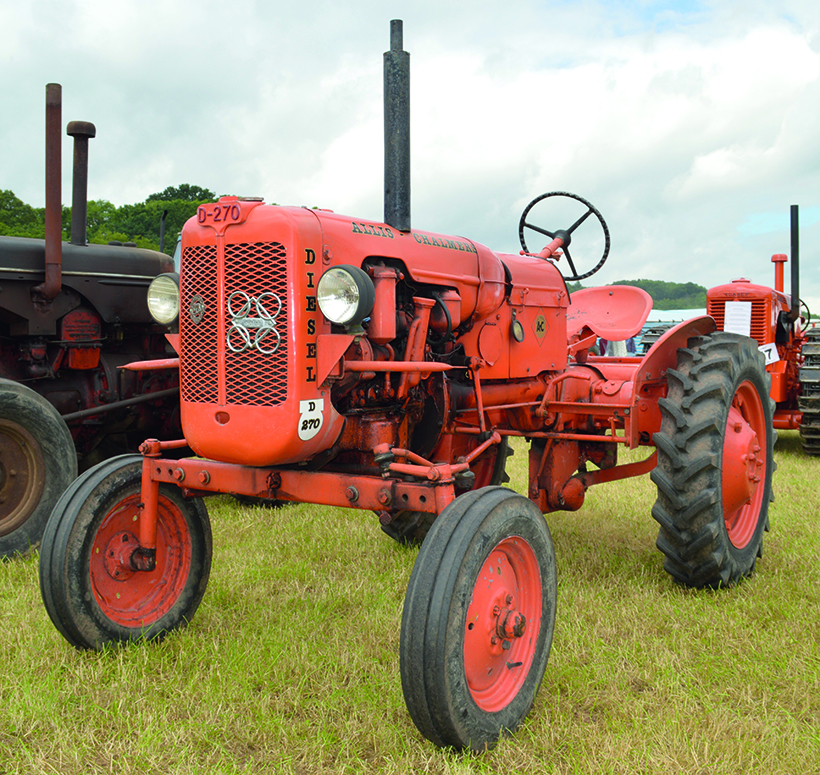
The Allis D-270 was in production alongside the B, but it wasn’t the success the B was, and was only made between 1954 and ‘57.
Allis D-270
In 1954 the D-270 came into production and overall, it was very similar looking to the B. A long tube running along the centre of the tractor with the back axle and engine at either end still gave the high ground clearance. As the D-270 faced competition from more modern tractors, the need simply to get on a tractor and turn a key and go was important.
Faffing about swinging a starting handle was a thing of the past, so the D-270 needed somewhere for a battery. Behind the tank and below the steering column was the obvious choice, on a few Bs with electrics the battery was located here. However, on the D-270 a new section of tinwork had been added, which also housed a dash. The whole thing was awkward and looked precisely what it was, an afterthought.
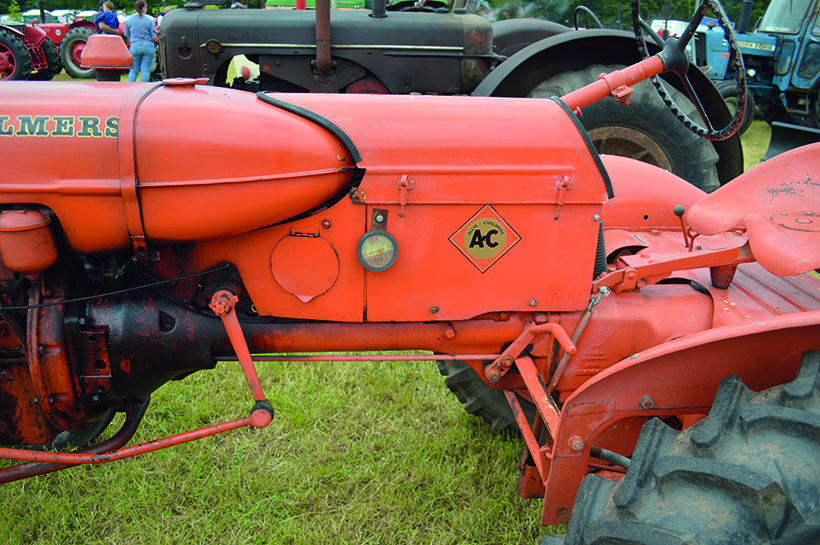
In an attempt to squeeze a battery and dash onto what was effectively a similar Model B platform, this ugly section was added.
Best option
If you’re thinking of buying a D-270 you get the choice of petrol/TVO and diesel, the latter being a Perkins three-cylinder diesel is the most appealing option. Overall, the D-270 wasn’t the hit the B was and being in production for only three years compared to the B’s 18 years confirmed this. Times had changed and tractor design had moved on, but Allis-Chalmers hadn’t. If you’re thinking of buying a D-270, make sure you buy a largely complete tractor as parts, especially tinwork, would be scarce. As this model wasn’t in production for long, finding one is getting trickier, but they’re about.
By the time the next model, the D-272, arrived Allis had sorted the tinwork out, the bonnet was longer and wider and now the exposed fuel tank was situated under it. The front cowl was also different and looked less than a slightly restyled B as the D-270 had. Allis had at least tried to bring a newer tractor to market, to a certain extent they had, and one that looked quite nice, however underneath there were still signs of the old B.

This gentleman’s expression says it all. This Allis D-270 would take a bit of work to restore. Before if you buy such a tractor, make sure you can repair the tinwork, or find a source for replacement parts.
As with the D-270, the diesel option was probably the best as it was still the Perkins. Another three years and D-272 was replaced, which was hardly surprising as Massey Ferguson and Fordson were by now producing much better tractors.
Essendine ED-40
As a new decade began – the Swinging Sixties – Allis-Chalmers and the Essendine factory produced a whole new tractor which was called the ED-40, this they hoped would take on the might of Massey Ferguson and Fordson who were by now the market leaders. Things didn’t look promising as the three-cylinder Perkins engine had been replaced for a four-cylinder engine that wasn’t made by Perkins.
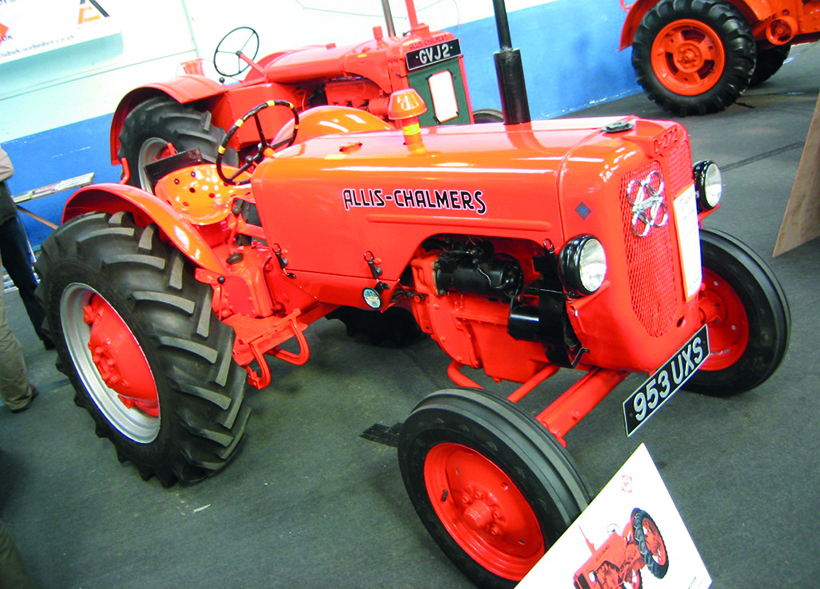
In 1957, the Allis D-272 arrived on the scene, and was a lot better looking than the D-270.
The engine Allis fitted in the ED-40 was the 23c that Ferguson had just discarded because of its poor starting ability. In the hopes of turning the fortunes around of this engine, four heater plugs had been fitted. I make no secret of my fondness for this engine, so I quite like the ED-40, especially after I got to restore one some years back.
The verdict
I found that the ED-40 is the Allis-Chalmers tractor you can probably get the most new parts for. You can use engine kits that are for Ferguson FE 35 four-cylinder diesels. You can also use the wheels and tyres from the FE 35 as well, the rears are 11×28 and the fronts are 4.00/19 or 6.00/16. As with other Allis-Chalmers I’ve covered here, tinwork for the ED-40 would be tricky to source, but most I’ve seen the tinwork seems to be relatively good.
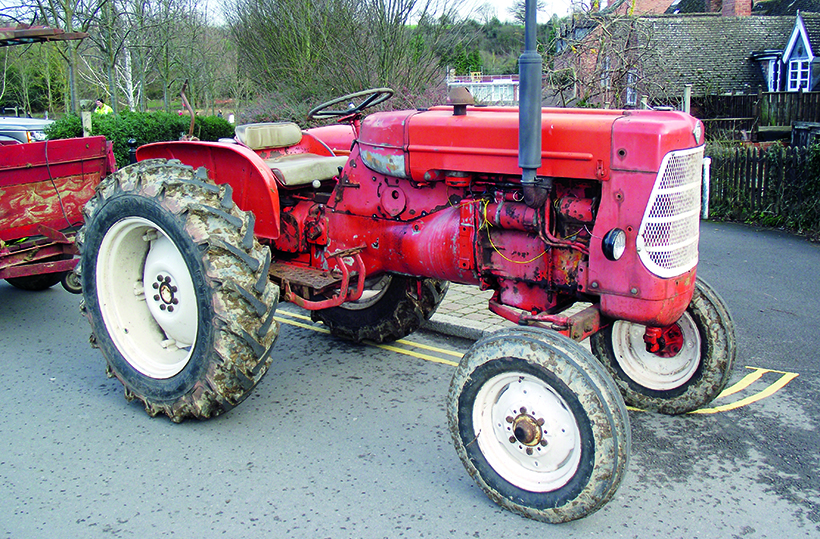
The Allis ED-40 was the last model produced at Essendine; it was a completely different design from the previous models.
The ED-40 wasn’t a great success, and fancy words like Depthomatic didn’t fool anyone. Once production ended in 1968, it spelt the end of Allis-Chalmers participation in the UK. The Allis B was always going to be a hard act to follow and the D-270, D-272 and ED-40 weren’t anywhere near as successful. Don’t let this put you off buying one though, just make sure you find a good example as certain parts are hard to find.
Which would I choose? Well, I already own an Allis B but would like an ED-40 to complete my set of 23c-engined tractors.
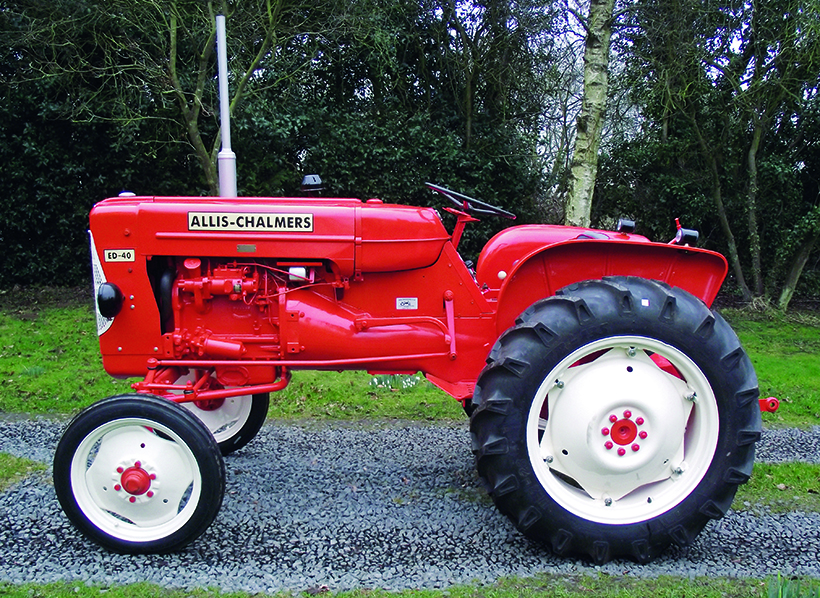
The famous orange was now joined by an off-white colour. Certain parts, like the wheels, were found on other tractors from around the same period.
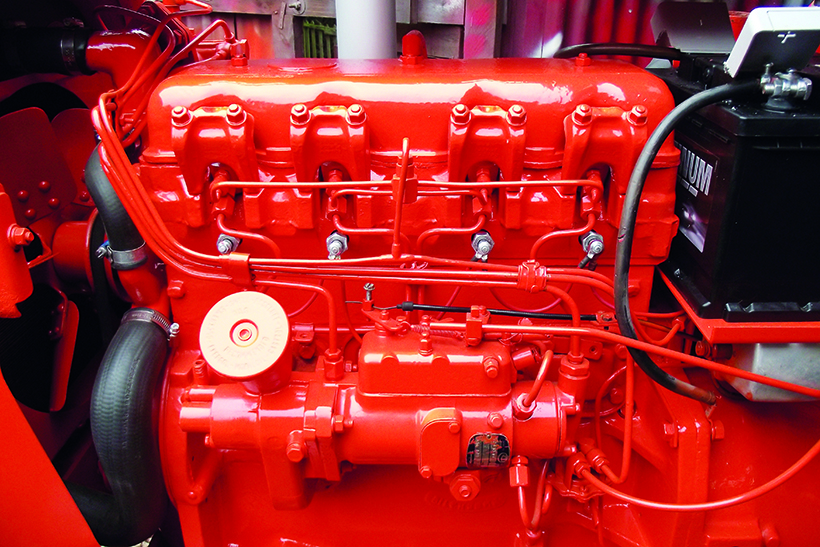
The ED-40 featured the 23c four-cylinder diesel engine fitted with four heater plugs to improve starting.
For a money-saving subscription to Tractor & Farming Heritage magazine, simply click here



